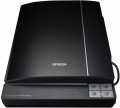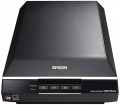Max. resolution
The highest resolution of the digital image generated by the scanner during operation. Specified in dots per inch — dpi (dots per inch).
The higher the scan resolution, the higher the resolution of the resulting image will be (with the same size of the source material) and the more accurately small details will be transmitted on it. On the other hand, high resolution noticeably affects the price of the scanner, increases the processing time and the size of the resulting file — despite the fact that the real need for high detail is not always present, and in some cases it is even unnecessary (for example, when processing an image with small artifacts, not visible at low detail). Therefore, when choosing by this parameter, you should not chase high resolution values — you should proceed from the real need and the specifics of the intended use of the scanner.
The simplest modern scanners have a resolution of about 300x300 dpi — this is quite enough for text recognition with an average font size. And in high-end professional models, this figure can exceed 7000x7000 dpi.
Optical density
The maximum optical density of a dark image that the scanner can distinguish from pure black. Optical density characterizes how much of the light falling on the image was reflected (for opaque images) or transmitted (for transparent). The higher the optical density, the less light the object reflects / transmits. Accordingly, the higher the optical density of the scanner, the higher its sensitivity and the better it is suitable for working with dark images.
Shades of grey
The number of shades of grey that the scanner recognizes. You should pay attention to this parameter if you plan to actively work with complex black-and-white materials (for example, photographs) — the more shades, the higher the quality of the digitized image. To date, the average is considered to be 512 shades — this approximately corresponds to the capabilities of the human eye. Models with a lower indicator belong to the entry level, more advanced ones “understand” 1024 shades.
Power consumption
The maximum power consumed by the scanner during operation. The higher the power, the more energy the scanner consumes, but this only applies to the scanning process itself — in standby mode, power consumption is negligible. And even at the peak in most models, the power is so low that in fact this parameter has practically no effect on electricity bills and is more of an auxiliary value (for example, it is used to calculate the total power of devices connected to an uninterruptible power supply).

